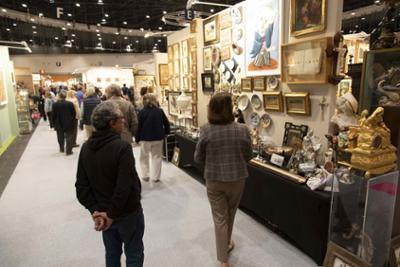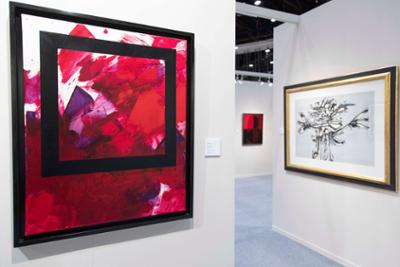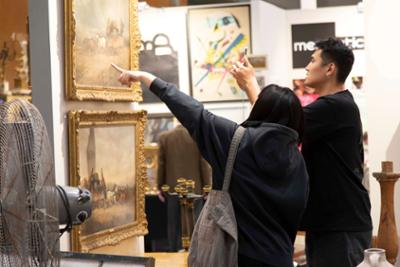

Brief introduction to the art market in Spain
Learn about the current situation of the art market in Spain and how art fairs are a key factor as showcases for the purchase and sale of art and collector's items.
Situation of the art market in Spain
According to figures from economic experts, the global art market moves around 43,000 million euros annually. At the beginning of the 21st century, the international market experienced an increase in its activity, especially between 2003 and 2007, and in the latter year it reached its zenith in terms of sales figures. The arrival of the global economic crisis caused the market to shrink in sales and prices, with prices falling by 48% in 2009.
However, the crisis also provided a revival for high quality antique works, which increased in demand due to the lower risk involved in acquiring them because they are works by well-established artists.
Once the first years of the crisis were over, the volume of annual sales experienced a discreet recovery worldwide, with an estimated 13% increase in 2013 and an increase in the price index of 80% compared to 2003.
Despite the bad economic situation, there was a 68% increase in art sales in Spain from 2003 to 2013, with total sales in the latter year amounting to 336 million euros. Interesting figures which, nevertheless, are scarce when compared to the growth of art and antiques sales in the international market, which exceeded 155%.
In the first years of the economic crisis, there were still more than 70 fairs in Spain dedicated partially or totally to art, antiques, design or collector's items, approximately 40% of which focused almost exclusively on art and antiques. However, only a few of them survived the period of economic recession, thus reducing the possibilities of events at which to exhibit and acquire works of art. As a result, the art market was at one of its most competitive moments, which is why they are looking for ways to differentiate themselves by generating new distribution channels that will also allow them to implement growth strategies.
Situation of the fair sector in the market
The fair sector is one of the main driving forces of the Art Market, which could be defined as a forum where supply and demand meet on a large scale, bringing together a large number of sellers who are experts in various fields, attracting visits from collectors. This is why fairs serve as an instrument of market prospection and orientation on future lines of collection, as they have become a space for buying and selling art and collector's items, but at the same time also a thermometer of the markets.
At the fairs, buyers and sellers coincide; supply and demand represent a showcase for the situation of the market outside the fair. After all, these events are not watertight events, but reflect the external situation of the sector.
The Spanish art market is currently undergoing a period of renewal, with the creation and promotion of new digital channels such as FERIARTE 365 and ANTIK Almoneda 365, which seek to bring art to all corners of the planet. An exercise in adapting to the environment that has undoubtedly favoured the growth and strengthening of the Spanish art market even in the most complicated times.
Art fairs as market showcases
Within all the sectors that make up the art market we find a common agent: the fairs which, together with the auctions, are part of the most iconic and representative events of the sector. However, unlike auctions, fairs are present in all sectors, without the chronology of the works affecting their celebration.
The Fair Law of 1943 called these events "trade fairs" or "contests" when they were public and periodic and their main purpose consisted of the exhibition, demonstration, dissemination and supply of goods and services, in order to contribute to their knowledge and commercialisation. They could not involve direct sales with the withdrawal of goods and their organisation had to be carried out by legally constituted, non-profit entities whose main purpose was to perform this function.
The necessary connectivity with collectors means that the concentration of supply (exhibitors) and demand (visitors) at these events fosters a more dynamic and stronger market, with the added advantage of having a physical space in which to exchange information and enjoy art. The fairs function as a large exhibition in which companies select quality products, with the intention of attracting an increasingly demanding and specialised public. For exhibitors and professionals in the sector, trade fairs are a meeting point, a confluence in the same physical and temporal space that conceptually responds to the definition of a periodic meeting, generally annual, where competitors interact by presenting and publicising the new products they have achieved.
It is clear that the trade fair phenomenon has undergone a clear evolution from being an environment in which to carry out transactions and commercial relations in a specific period, to the most widespread concept today, where they are recognised from a professional point of view as those commercial events that are projected towards a social task with the promotion of exhibitors' works and services, while providing visitors with a space for enjoyment and learning where they can learn about market trends. However, this evolution has allowed the basic essence of the fairs to be maintained, despite the passage of time.
The internationalisation of the art market
The globalisation and internationalisation of markets and the economy has encouraged the opening up to a more global international trade in which the sectors come together to hold more relevant and attractive fairs.
Art fairs are nowadays a showcase for exhibiting companies, since after the spectacular growth of the art market in general and this type of event in particular, they have become, for the collector and/or art investor, places where the fair acquires a more advanced concept, such as that of a brand in which the prestige and quality of the event itself guarantees the purchase made. This is how antiques fairs, such as those held at IFEMA in Madrid, thanks to the quality of the works exhibited and the supervision of the Committee of Experts, which reviews the works prior to the inauguration of the event, have been able to achieve security in the purchase of the pieces exhibited.
The growth exhibited by the fairs in recent years, with continuous success in attendance and sales, distinguishes the art fairs as the main forums for the purchase and sale of works, which also represent a meeting point for art lovers attracted by the quality of the works and the fun that the fair offers.
Ana Vico
Universidad Rey Juan Carlos
Director of the Master's Degree in Art Market Management







